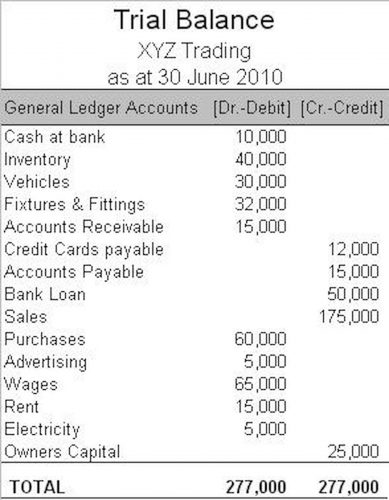
Your company’s net income can be found on your income statement or profit and loss statement. If you have shareholders, dividends paid is the amount that you pay them. In terms of financial statements, you can find your retained earnings account (sometimes called Member Capital) on your balance sheet in the equity section, alongside shareholders’ equity. In rare cases, companies include retained earnings on their income statements. The figure is calculated at the end of each accounting period (monthly/quarterly/annually). As the formula suggests, retained earnings are dependent on the corresponding figure of the previous term.

What is the Retained Earnings Formula?
Selling expenses increased $48.8 million, or 26.1%, and as a percentage of sales increased 160 basis points to 10.9%. General and administrative expenses increased $86.4 million, or 13.2%, and as a percentage of sales increased 180 basis points to 34.4%. Increased expenses were primarily driven by increased labor and facility costs, including rent and depreciation. When a company determines that it received an economic benefit that must be paid within a year, it must immediately record a credit entry for a current liability. Depending on the nature of the received benefit, the company’s accountants classify it as either an asset or expense, which will receive the debit entry. The Income Statement displays a company’s revenues and expenses over a specific period, typically one year.
How to calculate retained earnings – Formula, examples and video
At the end of each accounting period, retained earnings are reported on the balance sheet as the accumulated income from the prior year (including the current year’s income), minus dividends paid to shareholders. In the next accounting cycle, the RE ending balance from the previous accounting period will now become the retained earnings beginning balance. The stockholders’ equity section of the balance sheet for corporations contains two primary categories of accounts. The first is paid-in capital, or contributed capital—consisting of amounts paid in by owners. The second category is earned capital, consisting of amounts earned by the corporation as part of business operations.

Additional Paid-In Capital
Most corporations in the U.S. are not publicly traded, so do these corporations use U.S. A non-public corporation can use cash basis, are retained earnings current liabilities tax basis, or full accrual basis of accounting. Most corporations would use a full accrual basis of accounting such as U.S.
Finally, the closing balance of the schedule links to the balance sheet. This helps complete the process of linking the 3 financial statements in Excel. Retained earnings are the cumulative profit and losses of a company that has been reinvested into the business rather than being distributed as dividends to shareholders. Retained earnings are reported on the balance sheet under shareholder equity, which is classified as a long-term asset.
Prep early for a stress-free tax season
- Note that each section of the balance sheet may contain several accounts.
- Both cash and stock dividends lead to a decrease in the retained earnings of the company.
- Banks, for example, want to know before extending credit whether a company is collecting—or getting paid—for its accounts receivable in a timely manner.
- In the second quarter, the company generated net cash from operating activities of $2.1 billion, down $0.6 billion year to year.
Net Sales decreased 6% or $155 million to $2,237 million in the second quarter of 2024, compared to $2,392 million in the prior year period. Other acquisitions and divestitures (excluding Augusta) had a $16 million favorable impact on sales in the quarter, while foreign exchange had a $15 million unfavorable impact. For the first six months of the year, the company generated net cash from operating activities of $6.2 billion, down $0.2 billion year to year. Over the last twelve months, the company generated net cash from operating activities of $13.8 billion and free cash flow of $12.3 billion. « Given our first-half results, we are raising our full-year view of free cash flow, which we now expect to be more than $12 billion. »

Stock Dividends on the Balance Sheet
- Retained earnings are actually considered a liability to a company because they are a sum of money set aside to pay stockholders in the event of a sale or buyout of the business.
- This can make a business more appealing to investors who are seeking long-term value and a return on their investment.
- Debt, including IBM Financing debt of $11.1 billion, totaled $56.5 billion, flat year to date.
- To calculate RE, the beginning RE balance is added to the net income or reduced by a net loss and then dividend payouts are subtracted.
- Textbook content produced by OpenStax is licensed under a Creative Commons Attribution-NonCommercial-ShareAlike License .
When these amounts accumulate for several periods, they go to the retained earnings account. However, these amounts only include profits not paid to shareholders in previous periods. Analysts and creditors often use the current ratio, which measures a company’s ability to pay its short-term financial debts or obligations. The ratio, which is calculated by dividing current assets by current liabilities, shows how well a company manages its balance sheet to pay off its short-term debts and payables. It shows investors and analysts whether a company has enough current assets on its balance sheet to satisfy or pay off its current debt and other payables. The current ratio measures a company’s ability to pay its short-term financial debts or obligations.

Create a Free Account and Ask Any Financial Question
These reduce the size of a company’s balance sheet and asset value as the company no longer owns part of its liquid assets. Retained earnings represent a useful link between the income statement and the balance sheet, as they are recorded under shareholders’ equity, which connects the two statements. The purpose of retaining these earnings can be varied and includes buying new equipment and machines, spending on research and development, or other activities that could potentially generate growth for the company. This reinvestment into the company aims to achieve even more earnings in the future.
On the other hand, if you have net income and a good amount of accumulated retained earnings, you will probably have positive retained earnings. This is to say that the total market value of the company should not change. When it comes to investors, they are interested in earning maximum returns on their investments.


No responses yet